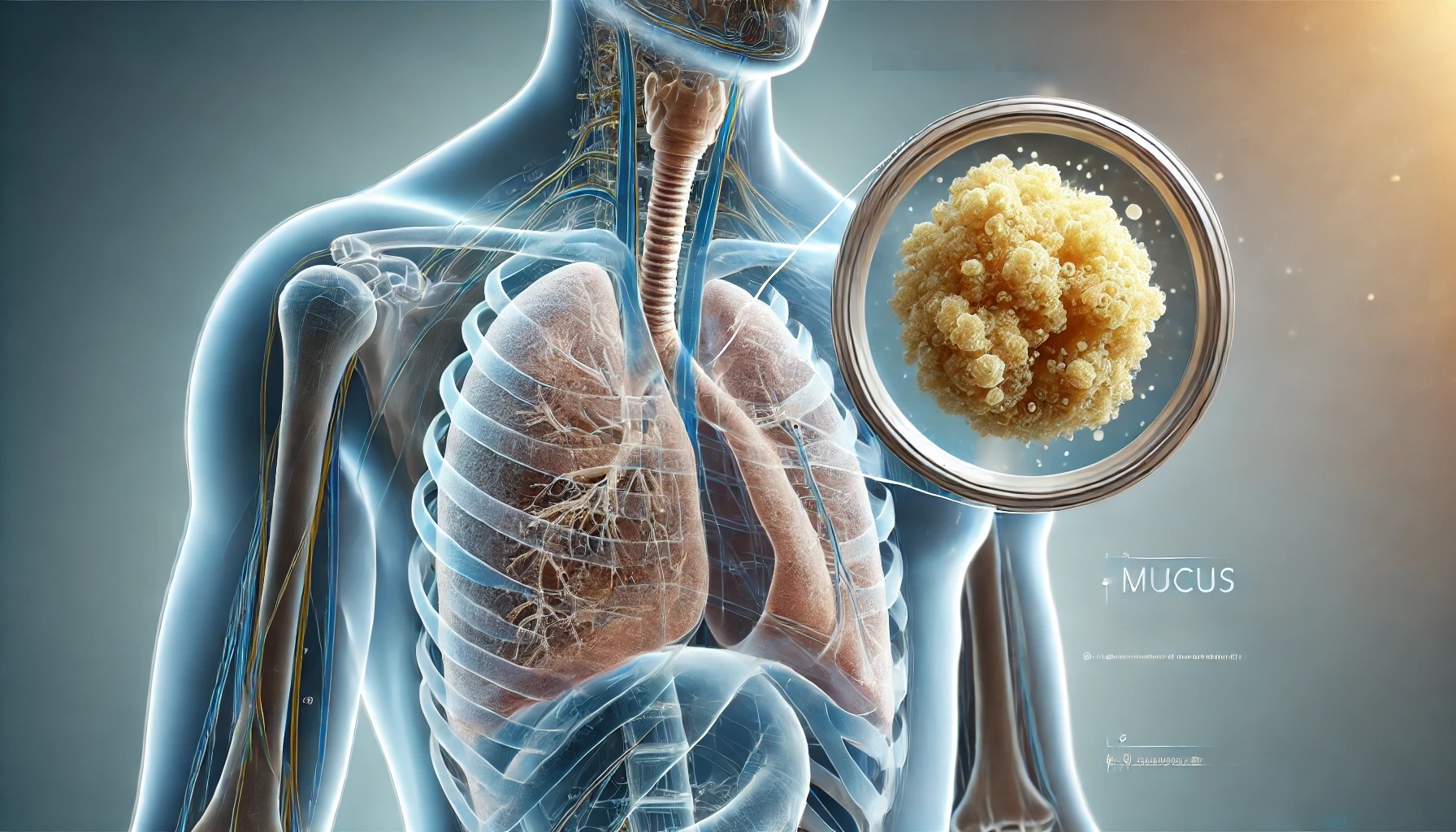This post was written with Consensus AI Academic Search Engine – please read our Disclaimer at the end of this article. Chest mucus, also known as phlegm, is a common symptom associated with various respiratory conditions. Understanding its causes and potential remedies can help manage and alleviate discomfort. This article delves into the physiology of chest mucus, common causes, and effective treatments.
Physiology of Chest Mucus
Chest mucus plays a crucial role in the respiratory system. It helps trap and expel foreign particles and pathogens from the airways. The production of mucus is a natural defense mechanism that increases in response to irritants and infections. Coughing is a primary method for clearing mucus from the respiratory tract, characterized by a violent expiration that shears away mucus and removes foreign particles from the larynx, trachea, and large bronchi1.
Common Causes of Chest Mucus
Chronic Bronchitis
Chronic bronchitis, a form of chronic obstructive pulmonary disease (COPD), is characterized by the overproduction and hypersecretion of mucus. This condition leads to decreased mucus elimination, predisposing individuals to lower respiratory tract infections and accelerated decline in lung function3. The inflammatory mechanisms responsible for mucus cell metaplasia in chronic bronchitis are not fully understood, but controlling inflammation and increasing mucus clearance are primary therapeutic goals3.
Cystic Fibrosis
Cystic fibrosis is a genetic disorder that significantly impacts mucus production and clearance. Individuals with cystic fibrosis produce thick, sticky mucus that can obstruct airways and lead to severe respiratory complications. Chest physiotherapy is a widely used treatment to clear mucus from the airways in cystic fibrosis patients. Studies have shown that airway clearance techniques can increase mucus transport in the short term, although long-term effects are less clear2.
Environmental Factors
Environmental factors such as smoking and exposure to pollutants can increase mucus production and exacerbate respiratory conditions. The prevalence of cough and mucus production in the population is influenced by these factors, with higher rates observed in areas with significant environmental pollution1.
Remedies for Chest Mucus
Chest Physiotherapy
Chest physiotherapy involves various techniques to enhance mucus clearance from the airways. These techniques include postural drainage, percussion, vibrations, and positive expiratory pressure. Studies have shown that chest physiotherapy can increase the amount of expectorated secretions and improve mucus clearance, although the effectiveness can vary depending on the specific method used2.
Expectorants and Mucolytics
Expectorants like guaifenesin are commonly used to manage chronic mucus hypersecretion. Guaifenesin works by increasing the hydration and decreasing the viscosity of mucus, facilitating its clearance from the airways. Although guaifenesin is widely used, there is limited published evidence on its mechanism of action or clinical efficacy in chronic bronchitis3.
Non-Pharmacological Measures
Non-pharmacological measures such as smoking cessation and avoiding environmental pollutants are crucial in managing mucus production. These measures help reduce the irritants that trigger excessive mucus production and improve overall respiratory health3.
Conclusion
Understanding the causes and remedies for chest mucus is essential for effective management and relief. Chronic bronchitis, cystic fibrosis, and environmental factors are common causes of increased mucus production. Treatments such as chest physiotherapy, expectorants, and lifestyle changes can significantly improve mucus clearance and alleviate symptoms. By addressing the underlying causes and employing appropriate remedies, individuals can achieve better respiratory health and quality of life.
Disclaimer
The content presented in this blog is generated by Consensus, an AI-powered academic search engine, and is based on publicly available scientific literature. While every effort is made to provide accurate, up-to-date, and well-researched information, the content is intended for informational and educational purposes only. It does not constitute medical advice, diagnosis, or treatment. Always consult a qualified healthcare professional before making any decisions regarding medical conditions, treatments, or medications. The AI system’s analysis may not cover all perspectives, emerging research, or individual cases, and it is not a substitute for professional expertise. Neither the blog publisher nor the developers of the AI-powered search engine are responsible for any actions taken based on the information provided in this content. Use of this information is at your own risk. Citations to the original scientific studies are included for reference, but these studies should be reviewed in full and interpreted with the guidance of a healthcare or research professional.
If you are experiencing a medical emergency, please seek immediate attention from a healthcare provider.
